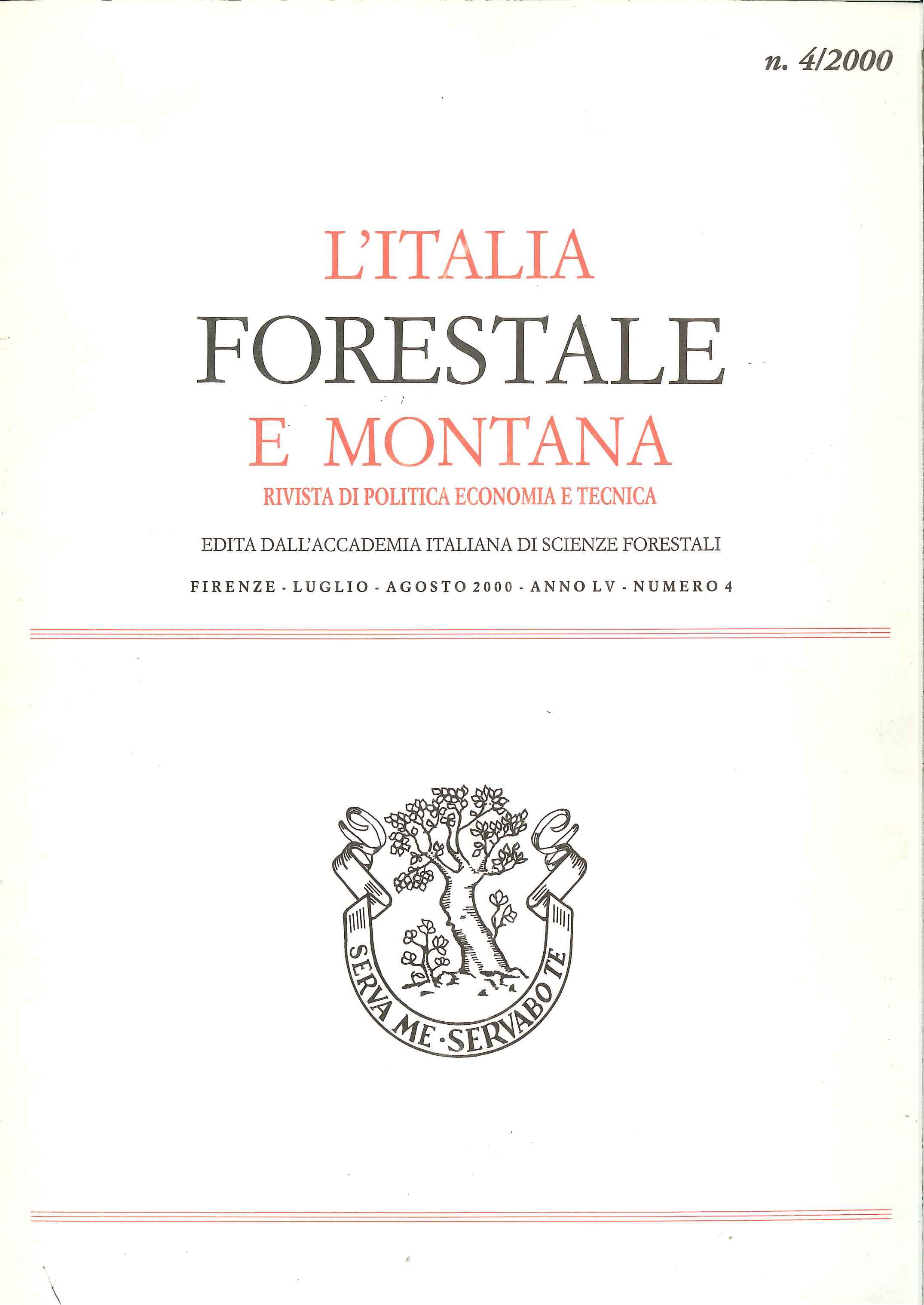Natural durability of Fraxinus oxyphylla Bieb. wood, from Tuscany, against wood-destroying fungi (Basidiomicetes).
Published 2013-06-19
Copyright (c) 2013 Italian Journal of Forest and Mountain Environments

This work is licensed under a Creative Commons Attribution-NonCommercial 4.0 International License.
Abstract
Research was conducted on the natural durability to funga1 attacks of Fraxinus oxyphylla wood on samples taken from 3 trees, grown in Tuscany: 3 trees tested from cultivated forest of S. Barbara (Arezzo). The trials were carried out in laboratory based on test methods of European standard EN 113 «Wood preservatives - determination of toxic value of wood preservatives against wood destroying basidyomicetes cultured on agar medium» and EN 350/1 «Durability of wood and wood-based products - natural durability of solid wood - Part 1: guide to the principles of testing and classification of the natural durability of wood. The samples (size 15x2.5x5.0 cm.) were taken from 3 different radial positions: inner, middle, outer. According to the standards used. the number of test specimens was 6 from each log position and for each test fungi; the reference specimens was Fagus sylvatica (using for testing hardwood); the test fungi (strains according to EN 113) was: Coniophora puteana, Trametes versicolor, Gloeophyllum trabeum. The results showes that Fraxinus oxyphylla wood, was easly attacked by all test fungi and, following the EN 350/1 classification, based on the results of average mass loss of test specimens, is classified in the 4th durability class «Slightly durable». No significant differences were observed between the trees and among different radial position.

